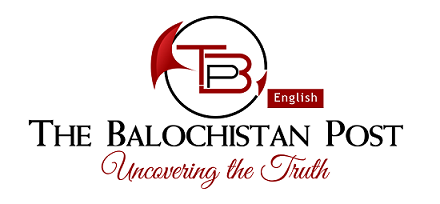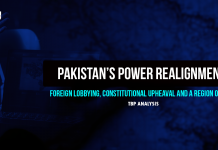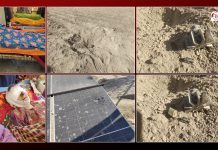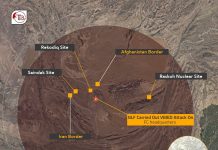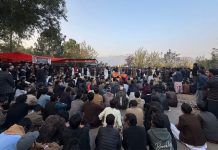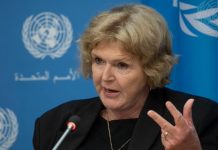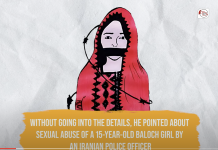The United States established a fund to assist the people of Afghanistan, known as the “Afghan Fund,” through the Departments of the Treasury and of State, in cooperation with international partners including the government of Switzerland and Afghan economic experts.
“Pursuant to Executive Order (E.O.) 14064, President Biden set a policy of enabling $3.5 billion of Afghan central bank reserves to be used for the benefit of the people of Afghanistan while keeping them out of the hands of the Taliban and other malign actors. The Afghan Fund will protect, preserve, and make targeted disbursements of that $3.5 billion to help provide greater stability to the Afghan economy,” the statement of the US Treasury department reads.
Anwar ul-Haq Ahady, former Minister of Commerce and Industry of Afghanistan, Shah Mohammad Mehrabi, a member of the Supreme Council of Da Afghanistan Bank, and Scott C. Miller, the US Ambassador to Switzerland, as well as a person from the Swiss Foreign Ministry, are the trustees of this fund and will decide on the assets of Afghanistan.
Meanwhile, the US State Department said that in this fund, 3.5 billion dollars of assets of the Central Bank of Afghanistan will be preserved and spent for the stability of the Afghan economy.
“We will help the people of Afghanistan as the economy of Afghanistan faces serious structural issues that no amount of external support can resolve of its own, and the US has made clear to the Taliban that the onus is on them to make key reforms,” said US State Department spokesperson Ned Price.
“This fund will protect and preserve the Afghan Central Bank reserves while making targeted disbursements to help stabilize their economy and, ultimately, support its people and work to alleviate the worst effects of the humanitarian crisis,” Price further stated.
“The people of Afghanistan face humanitarian and economic crises born of decades of conflict, severe drought, COVID-19, and endemic corruption,” said Wendy Sherman, United States Deputy Secretary of State. “Today, the United States and its partners take an important, concrete step forward in ensuring that additional resources can be brought to bear to reduce suffering and improve economic stability for the people of Afghanistan while continuing to hold the Taliban accountable.”
According to Asif Nang, director of the Afghanistan Economic Research Center, 3.5 billion dollars will not be spent to end hunger in the country. Instead, the majority of this money will be used for economic development, money printing, and huge imports like electricity.
“With this, the stigma of the property right rule vanishes. The second issue is the establishment of a council outside Afghanistan. The third issue is that, if the money is not in the country’s central bank, anywhere in the world, it cannot accomplish the objectives for which these reserves were established,” Asif Nang said.
“Using the 3.5 billion dollars, which is used to support Afghanistan monetarily, for the purpose of printing money or other things that are overseen by four of our friends, two of them Afghans and the other two foreigners, not only fails to address the problem but exacerbates it,” said Sayed Masoud, economist.
However, the Afghan Ministry of Economy asked the US to hand over the frozen assets of Afghanistan to the Da Afghanistan Bank (Central Bank).
“No one has the right to place conditions on how and by whom these funds should be used,” said Abdul Latif Nazari, deputy of the ministry.
The former president Hamid Karzai, argued that the Central Bank’s frozen assets should not be split in two and should instead be preserved as the national assets of the Afghan people.
According to some members of the established fund’s board of trustees, Afghanistan is a member of the World Bank, the Asian Development Bank, and the International Monetary Fund. It is expected that two to three million dollars of Afghanistan’s assets will be paid as a result of Afghanistan’s membership in these big economic institutions.
